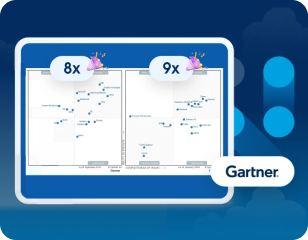What Is an API Endpoint?
In today's interconnected digital world, APIs (Application Programming Interfaces) are the backbone that allows different software systems to communicate. For anyone involved in software or platform development, understanding APIs is crucial. API endpoints are key components of APIs, which serve as the touchpoints for interactions between systems. This article will provide an in-depth look at API endpoints, how they work, and why they are essential in the technical landscape.
Understanding API Endpoints
An API endpoint is a specific address (usually a URL) a client application uses to communicate with a server. Each endpoint represents a unique function or resource within an API, allowing an app to connect and perform some sort of task. For example, a weather API might have separate endpoints for current weather data, forecasts, and historical weather information.
API endpoints are the points of entry where developers can send requests and receive responses to power their apps (especially those that integrate with other apps). They are integral to the functioning of APIs, acting as gateways through which applications access the needed features and data. For instance, Twitter's API includes endpoints for posting tweets, retrieving user profiles, and searching for specific hashtags.
Types of API Endpoints
There are several types of API endpoints, each catering to different communication protocols and use cases:
- REST API Endpoints: Representational State Transfer (REST) is the most common type of API architecture. RESTful endpoints use standard HTTP methods (GET, POST, PUT, DELETE) and are designed to be stateless and scalable. They are widely used in web services due to their simplicity and flexibility.
- SOAP API Endpoints: Simple Object Access Protocol (SOAP) is a protocol for exchanging structured information in web services. SOAP endpoints rely on XML-based messaging and are known for their robustness and security features, making them suitable for enterprise-level applications.
- GraphQL API Endpoints: GraphQL is a query language for APIs that allows clients to request specific data. Unlike REST, where endpoints are fixed, GraphQL endpoints enable clients to define the structure of the response, making them highly flexible and efficient for data retrieval.
Each type of endpoint has its advantages and use cases, and the choice depends on the specific needs of the application and the desired functionality.
Components of an API Endpoint
As locations where apps can connect, there are several components to handle security, data transactions, and more.
An API endpoint typically consists of several key components:
- URL Structure: The endpoint's URL identifies the resource and includes the base URL, path, and sometimes query parameters. For example, https://api.example.com/users/123 could represent an endpoint for retrieving user information.
- HTTP Methods: Endpoints use HTTP methods to perform actions. Common methods include GET (retrieve data), POST (create data), PUT (update data), and DELETE (remove data).
- Headers and Parameters: Headers provide metadata such as authentication tokens, while parameters (query or path) allow clients to pass additional information to the server.
- Authentication and Security: Endpoints often require authentication to ensure secure access. Methods include API keys, OAuth tokens, and other security mechanisms to protect data and resources.
Benefits of API Endpoints
API endpoints offer numerous benefits that enhance the functionality and efficiency of software systems:
- Modularity and Scalability: API endpoints enable modular development, allowing different parts of an application to be built and maintained independently. This modularity facilitates scalability, as developers can update or scale specific components without affecting the entire system.
- Interoperability: API endpoints promote interoperability between different systems and platforms. Adhering to standard protocols and formats enables seamless integration and communication between diverse software applications.
- Efficiency in Development: Endpoints provide a clear and standardized way to access data and functionality, reducing the complexity of development. Developers can leverage existing endpoints to implement new features, accelerating development quickly.
- Flexibility and Customization: With API endpoints, developers can create customized solutions tailored to specific needs. Endpoints can be designed to provide just the necessary data and functionality, optimizing performance and user experience.
- Security and Control: Properly designed endpoints include authentication and authorization mechanisms, ensuring that only authorized users can access sensitive data. This security helps protect against unauthorized access and data breaches.
- Consistency and Reliability: API endpoints offer a consistent interface for accessing services, which enhances reliability. Applications can depend on well-documented endpoints to perform specific tasks, reducing the risk of errors and improving overall system stability.
Working with API endpoints can present several challenges:
- Security Issues: Ensure endpoints are secure using HTTPS, implement authentication, and regularly review security practices.
- Rate Limiting and Throttling: Manage the number of requests clients can make to prevent abuse and ensure fair usage.
- Scalability and Performance Optimization: Design endpoints to handle high traffic and optimize performance using efficient query mechanisms and caching strategies



